- Home
- Alison Weir
Mary, Queen of Scots, and the Murder of Lord Darnley Page 4
Mary, Queen of Scots, and the Murder of Lord Darnley Read online
Page 4
The Queen Regent appointed Bothwell her Lieutenant-General, “with special responsibility for affairs of war.”42Elizabeth I, who had already established the Protestant Church of England, was now secretly supporting the Lords of the Congregation, most of whom were in the pay of the English government. In October, Bothwell intercepted 6,000 crowns that the English had sent to aid the Scottish rebels, and gave them to Marie de Guise. For this, he earned the undying enmity of Lord James, Chatelherault and most of the other Protestant nobles.
In February 1560, the Lords and the English concluded the Treaty of Berwick, whereby Elizabeth agreed to send troops to overthrow the Catholic Regent and drive out the French. In April, an English army laid siege to Leith, which was then held by French troops for Marie de Guise. Later that month, the Lords overthrew the ailing Regent. In her place, Scotland was to be governed on behalf of its absent Queen by a Protestant Great Council comprising Chatelherault, his son, James Hamilton, Earl of Arran, and Lord James: Chatelherault was merely a figurehead—the real power lay with James and Knox. On 11 June, Marie de Guise died of dropsy. When the news reached France, Mary was prostrated with grief for the beloved mother she had not seen for ten years.43
Hostilities now ceased, and the Treaty of Leith brought to an end the ancient alliance between Scotland and France. On 6 July, a treaty signed at Edinburgh paved the way for closer and more lasting bonds between Scotland and England. Under its terms, all foreign troops were to leave Scotland, foreigners were to be barred from holding any government office, and the English undertook not to interfere in Scottish affairs; in return, the grateful Scots, on behalf of Queen Mary, recognised Elizabeth as Queen of England, and promised that Mary would renounce her claims to the English throne and succession. The Treaty of Edinburgh was negotiated without Mary’s consent, its terms were odious to her, and she would consistently refuse to ratify it, much to Elizabeth’s mortification.
In August, the Scottish Parliament met and, in defiance of its lawful sovereign, and without her assent, passed the legislation that would establish the Protestant Reformation in Scotland. Such legislation was undoubtedly illegal, for Mary refused to ratify it, but it had been enacted in response to popular demand. In an Act opposed by only three peers, without a murmur of protest from Archbishop Hamilton, the Catholic faith was outlawed and the celebration of Mass made a capital offence. When she heard, Mary angrily expressed her disapproval to the English ambassador in Paris: “My subjects of Scotland do their duty in nothing. I am their sovereign, but they take me not so. They must be taught to know their duties.” 44There was talk in Scotland at this time of deposing Mary and replacing her with Lord James, but it came to nothing.
Bothwell, meanwhile, had gone to Denmark, having been sent to Europe to raise support for the late Regent. In Copenhagen, a Norwegian admiral, Christopher Throndssen, offered him the hand of his daughter Anna, with a dowry of 40,000 silver dollars. When Bothwell moved on to Germany and Flanders, Anna went with him and sold her jewellery to finance his travels, for he had spent most of his money in supporting the Regent. Anna and her family later insisted that a marriage had taken place, but this may have been to save face, for there is no record of it, nor of the impecunious Bothwell receiving the dowry, and Anna never styled herself Countess of Bothwell. It seems more likely that she attached herself to Bothwell on the promise of marriage, but that he lost interest in making such a commitment. Anna may have been the mother of his only known bastard, William, to whom Bothwell’s mother later willed all her possessions.
The death of Marie de Guise robbed Bothwell of political and financial support in Scotland. He therefore left Anna in Flanders and went to the French court to seek service with Queen Mary and perhaps the restitution of some of the funds he had outlaid. Mary did grant Bothwell an audience, but its outcome is unknown. In the autumn, he rejoined Anna in Flanders.
That November, Francis II fell seriously ill with a virulent inflammation of the middle ear that spread to his brain and caused an abscess.45His sufferings were terrible and prolonged, and on 5 December he passed away, aged not quite seventeen. After a post-mortem examination, his physician declared that much of the young King’s brain had been destroyed by the abscess. Mary, who had nursed Francis devotedly, was inconsolable at his death; 46for the third time in less than eighteen months, she was facing the loss of someone dear to her. Again, she donned the deuil blanc, the white mourning of French queens, then disappeared into her black shrouded chamber for the customary forty days of seclusion imposed on royal widows.
The throne now passed to Francis’s younger brother, the ten-year-old Charles IX, but the reign of the Guises was effectively over; Mary, the instrument of their greatness, was now a childless Queen Dowager, and no longer of great political importance at the French court. Real power now lay in the hands of the hostile Queen Mother, who presently made it perfectly clear that Mary was no longer welcome in France. It was at this point that Mary began to think seriously about returning to her own kingdom.
2
“THE MOST BEAUTIFUL IN EUROPE”
MARY HAD TWO OPTIONS OPEN to her: she could make a second marriage with a foreign power, or she could return to Scotland. At first, she barely considered the latter. Her priority was to recover the prestige she felt she had lost through widowhood by marrying a great Catholic king, or a king’s son. At eighteen, with her crown and her rich French dowry, she rivalled Elizabeth I as the best match in Europe.
After Mary’s period of mourning officially ended in January 1561, she began seriously to consider marriage with Don Carlos, heir to Philip II of Spain. At that time, France and Spain were the two most powerful nations in Christendom, so Don Carlos was a great prize. But Catherine de’ Medici, whose daughter Elisabeth had recently married Philip, had no wish to see her eclipsed by Mary, or the influence of the Guises reaching into Spain. She also vehemently opposed their suggestion, put forward as a means of keeping Mary in France, that the Queen of Scots marry her late husband’s brother, Charles IX. Instead, the Queen Mother urged Mary to go back to her own kingdom and take up the reins of government there.
Some people thought that Mary should consider an advantageous dynastic marriage nearer home. There were two possible candidates. One was Henry Stuart, Lord Darnley, the fourteen-year-old son of the Earl and Countess of Lennox. Darnley’s ambitious parents wasted no time in sending him to France in February 1561 to offer condolences on the death of Francis II and privately to press his suit.1Naturally, they took care to keep the true purpose of his visit a secret from Queen Elizabeth, because Darnley had a strong claim to the English throne, and it did not take much to arouse her suspicions. The Catholic Lennoxes had been in high favour with Mary I, and the Countess had then gone out of her way to make life difficult for Elizabeth when the latter was in disgrace; on Elizabeth’s accession, it had been made clear to the Lennoxes that they were no longer welcome at court. The Queen feared their ambition, and had spies planted in their household to keep a watch on their movements. In happy ignorance, Lady Lennox was now writing to several Catholic nobles in Scotland in an effort to enlist support for Darnley’s marriage to Queen Mary.
Elizabeth would never have approved such a marriage, for Darnley, like Mary, was too near her throne for comfort. The Spanish ambassador in England, Alvaro de Quadra, had told Philip II that, should Elizabeth die, the English Catholics would raise Darnley to royal estate as Henry IX. Yet there were obstacles in the way of him succeeding. His mother had been excluded from the Act of Succession and from Henry VIII’s Will, not only because she was a Roman Catholic, but also because there were doubts as to her legitimacy, her parents’ marriage having been declared invalid. Nevertheless, she and Darnley, whose claim to the English succession came through her, had both been born in England, and many therefore considered that their line had a better right than Mary Stuart to succeed Elizabeth. Darnley had also inherited rights to the Scottish succession through his father. Marriage to Mary could only reinforce his claim
s to both kingdoms, and would also boost the Scottish Queen’s ambitions in England.
In the event, Mary was not interested in marrying Darnley. She had set her sights on the far greater match with Don Carlos.
The second candidate for Mary’s hand was James Hamilton, Earl of Arran, who was five years her senior and had, in 1560, unsuccessfully proposed to Elizabeth I. As Chatelherault’s heir, Arran had a strong claim to the Scottish succession, but he did not appeal to Mary as a prospective husband because he was an extreme Protestant and had been one of the most militant leaders of the Reformation. Many Scots, including Knox, were in favour of a marriage between Arran and Mary, but Mary turned him down, with ultimately tragic results.
With no immediate prospect of the great foreign marriage alliance she desired, Mary decided to return to Scotland. Although the Lords of the Congregation had formally invited her to do so, both they, and Queen Elizabeth, would have been happier to see her stay in France; Knox feared that her arrival would signal a religious counter-revolution, while another leading Protestant, William Maitland, foresaw “wonderful tragedies.”2
In March, Lord James went to France to see Mary and negotiate the conditions for a smooth transfer of power; he was determined to ensure that the arrival of a Catholic queen would not make too many difficulties for the Protestant establishment. Mary made it clear that she would come in a spirit of reconciliation. She would not interfere with the newly founded Protestant Church, but insisted on her right to hear Mass in the privacy of the royal chapels. This seemed a fair compromise, and Lord James promised “to serve her faithfully to the utmost of his power, and returned again to Scotland to prepare the hearts of her subjects against her home-coming.”3
Soon afterwards, George Gordon, the Catholic Earl of Huntly, sent John Leslie, Bishop of Ross to France to urge Mary to accept Huntly’s armed backing and restore the Catholic faith in Scotland by force. Wisely, she declined. Huntly, it turned out, had betrayed his faith by joining the Lords of the Congregation and profiting from the spoils of the Reformation. There was no guarantee that he would not turn his coat again.
In the spring of 1560, the Earl of Bothwell returned to Scotland on the Queen’s business, apparently taking Anna Throndssen with him as his mistress. Mary was grateful to him for his unswerving loyalty to her mother, and as he was high in her favour, his enemies in Scotland dared not touch him.
By the summer, Mary was well advanced in preparations for her return, but because she had refused to ratify the Treaty of Edinburgh, Elizabeth declined to issue her with a safe-conduct to journey through England. When she changed her mind, it was too late, and Mary had already put to sea, having sailed from Calais on 14 August. Bothwell, as Lord High Admiral of Scotland, was in command of the fleet that came to fetch her. Over 200 years later, painters of the romantic era would frequently depict Mary being borne off in a ship, gazing wistfully back at France, yet while she certainly retained a lasting affection for the land in which she had grown up, it is clear that she was now determined to look to the future.
At six o’clock on the misty morning of 19 August 1561,4Mary’s ship docked at the port of Leith, and she set foot in her kingdom for the first time in thirteen years. She was not expected for another few days, and was obliged to take shelter in the house of a local merchant until Lord James and other nobles came to receive her and escort her to Edinburgh. Here, she was warmly welcomed by eager crowds, who cheered as she rode up the High Street (now known as the Royal Mile) to Edinburgh Castle, and later, as she presided over a banquet there, lit bonfires in her honour.
Not everyone was in raptures at her arrival. Knox wrote gloomily: “The very face of Heaven did manifestly speak what comfort was brought into this country with her, to wit, sorrow, dolour, darkness and all impiety. The sun was not seen to shine two days before, nor two days after. That forewarning gave God unto us; but, alas, the most part were blind.” Generally, however, the people of Scotland, including many members of the Protestant establishment, welcomed their Queen. “Her Majesty returning was gladly welcomed by the whole subjects,” wrote the courtier and diplomat Sir James Melville. “For at first, following the counsel of her friends, she behaved herself humanely to them all.” Many were impressed by her beauty, charm and dignity, or felt compassion for her as a young widow. It seemed that she was going to be a success.
Mary would certainly have found Scotland very different from France. It was a much poorer, and more sparsely populated, land, inhabited by about only 5–700,000 people. Its often turbulent nobles were drably dressed5compared to their French counterparts, and seemed to be constantly forming rival factions, or engaging in the complicated family feuds that arose from intensive intermarrying or clan warfare. Mostly motivated by self-interest, they ruled their feudalities like independent princes, and resented any interference from the monarch or from central government. Although many still lived in strongly fortified castles, the influence of the French Renaissance, which had featured increasingly in the architecture of the royal palaces since the reign of James IV (1488–1513), was now evident in the houses of the nobility, whose tastes, thanks to the Auld Alliance, were essentially French.
Next in rank below the Lords came the gentry, or lairds, who held their lands directly from the Crown, then the articulate and often outspoken burgesses of the urban merchant class, and finally, at the bottom of the pyramid, the peasantry. Most of Mary’s subjects lived in remote villages or farming communities, in rustic hovels. Few received much in the way of education but, thanks to the vision of John Knox, the Reformation Parliament had provided for the foundation of a system of schooling that was to endure for several centuries.
The Scots were a proud and tenacious people. Foreign visitors praised them as courageous warriors, but also found them to be uncouth and lawless, hostile to strangers and inordinately quarrelsome. Their way of life was seen as primitive. The weather was often cold and wet, and the roads, where they existed, were atrocious. The people were ignorant and superstitious, and there was a widespread belief in witchcraft. It appeared that all classes valued money more than honour. However, Scotland was in many respects a civilised land: it boasted three universities, and had thriving trade and cultural links with other countries.
Although Catholics were in the majority, most of the Lords were Protestant, and the city of Edinburgh itself was slowly becoming a bastion of Calvinism. Edinburgh then had a population that has been variously estimated as numbering between 10,000 and 40,000; most were crowded into cramped accommodation in tall tenement blocks in alleyways known as closes or wynds, on either side of the High Street, the impressive wide thoroughfare that led down from Edinburgh Castle, which stood on its high rock at the top, to Holyrood Palace at the bottom, which lay in the shadow of the extinct volcano known as Arthur’s Seat. A defensive wall 21 feet high, built in 1450 and replaced in 1513 after the Scots were defeated by the English at the Battle of Flodden, encircled the city, and had eight fortified gateways; one, the crenellated Netherbow Port, straddled the High Street. Below it was the Canongate, along which the former canons of Holyrood Abbey had walked into the city. At night, the city and the wall were patrolled by the 32-strong town watch.
The Flodden Wall, which was not demolished until the eighteenth century, was responsible for the overcrowding in the city. Instead of moving outwards, the citizens preferred to stay safe inside its bounds, and simply kept adding extra levels to their tenement blocks, some of which were fifteen storeys high. Sanitation was non-existent, and the closes were awash with sewage. The Scots might take pride in the High Street itself, but one visitor likened it to “an ivory comb whose teeth on both sides are very foul, though the space between them is clean and sightly.”6Well-to-do citizens preferred to live in the Canongate, near Holyrood Palace, or below the High Street in the Cowgate, then a select burgh. Another visitor wrote, “There is nothing humble or rustic, but all is magnificent.”7
Edinburgh was Scotland’s capital, its greatest city, and a pr
osperous, busy market centre. It was also the political hub of the realm, for the Privy Council, Parliament and the Court of Session (the central civil court) met regularly in the new Tolbooth on the High Street, which also served as a prison, and the law courts were situated nearby. Below the castle, on the site now occupied by Princes Street Gardens, lay the Nor’ Loch, an artificial lake created by James II as part of a defensive system; this was not drained until the eighteenth century, when the Georgian New Town was built. Until then, Edinburgh was centred upon the High Street and the few surrounding streets. The principal church was the imposing St. Giles with its distinctive crown spire, which stood on the High Street and had enjoyed collegiate status since the fifteenth century, but had recently been stripped of all the trappings of the old faith. Nearby stood the turreted Mercat Cross, where proclamations were made and criminals executed.
When she arrived in Edinburgh, Mary took up residence in Holyrood Palace, which was to be her chief abode, and is still the official Scottish residence of the sovereign. The adjoining former Augustinian abbey of the Holy Rude had been founded by David I in 1128, and by the end of the fifteenth century, after Edinburgh became the capital, its guest house had become a favoured royal residence. In 1500–3, James IV built a royal palace next door to the cloisters to welcome his English bride, Margaret Tudor. Very little remains of this now, because between 1528 and 1536, their son, James V, employed French architects and craftsmen to transform Holyrood into a Renaissance showpiece with a donjon and an elegant west façade. In 1544, during the “rough wooing,” the abbey was partially destroyed by the English, and when Mary moved into the damaged palace in 1561, she had to spend some of her French dower on restoration work. At that time, Holyrood Palace was commonly referred to as “the Abbey.”

 Richard III and the Princes in the Tower
Richard III and the Princes in the Tower Britain's Royal Families: The Complete Genealogy
Britain's Royal Families: The Complete Genealogy The Lady in the Tower: The Fall of Anne Boleyn
The Lady in the Tower: The Fall of Anne Boleyn Six Wives of Henry VIII
Six Wives of Henry VIII Elizabeth of York: A Tudor Queen and Her World
Elizabeth of York: A Tudor Queen and Her World Captive Queen
Captive Queen Innocent Traitor
Innocent Traitor The Marriage Game
The Marriage Game A Dangerous Inheritance
A Dangerous Inheritance Katherine of Aragón: The True Queen
Katherine of Aragón: The True Queen The Marriage Game: A Novel of Queen Elizabeth I
The Marriage Game: A Novel of Queen Elizabeth I Princes in the Tower
Princes in the Tower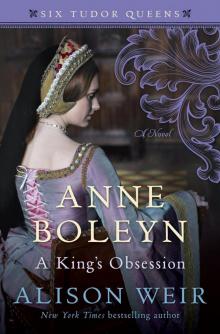 Anne Boleyn: A King's Obsession
Anne Boleyn: A King's Obsession Traitors of the Tower
Traitors of the Tower Mistress of the Monarchy: The Life of Katherine Swynford, Duchess of Lancaster
Mistress of the Monarchy: The Life of Katherine Swynford, Duchess of Lancaster Queens of the Conquest: England’s Medieval Queens
Queens of the Conquest: England’s Medieval Queens Eleanor of Aquitaine: A Life
Eleanor of Aquitaine: A Life Mary, Queen of Scots, and the Murder of Lord Darnley
Mary, Queen of Scots, and the Murder of Lord Darnley Henry VIII: The King and His Court
Henry VIII: The King and His Court Queen Isabella: Treachery, Adultery, and Murder in Medieval England
Queen Isabella: Treachery, Adultery, and Murder in Medieval England Katheryn Howard, the Scandalous Queen
Katheryn Howard, the Scandalous Queen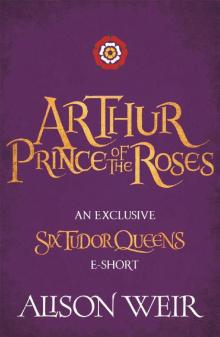 Arthur- Prince of the Roses
Arthur- Prince of the Roses The Wars of the Roses
The Wars of the Roses Eleanor of Aquitaine: By the Wrath of God, Queen of England
Eleanor of Aquitaine: By the Wrath of God, Queen of England Mary Boleyn: The Great and Infamous Whore
Mary Boleyn: The Great and Infamous Whore Jane Seymour: The Haunted Queen
Jane Seymour: The Haunted Queen Anna of Kleve, the Princess in the Portrait
Anna of Kleve, the Princess in the Portrait Lancaster and York: The Wars of the Roses
Lancaster and York: The Wars of the Roses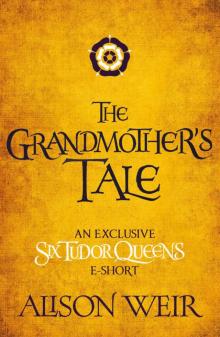 The Grandmother's Tale
The Grandmother's Tale The Princess of Scotland (Six Tudor Queens #5.5)
The Princess of Scotland (Six Tudor Queens #5.5) The Lady Elizabeth
The Lady Elizabeth Katherine Swynford: The Story of John of Gaunt and His Scandalous Duchess
Katherine Swynford: The Story of John of Gaunt and His Scandalous Duchess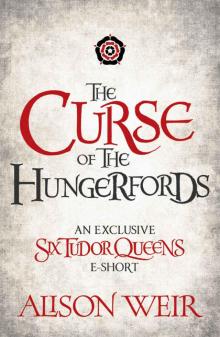 The Curse of the Hungerfords
The Curse of the Hungerfords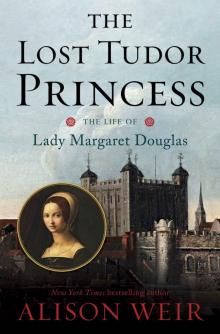 The Lost Tudor Princess: The Life of Lady Margaret Douglas
The Lost Tudor Princess: The Life of Lady Margaret Douglas Eleanor of Aquitaine
Eleanor of Aquitaine Mistress of the Monarchy
Mistress of the Monarchy The Lost Tudor Princess
The Lost Tudor Princess Henry VIII
Henry VIII Anne Boleyn, a King's Obsession
Anne Boleyn, a King's Obsession A Dangerous Inheritance: A Novel of Tudor Rivals and the Secret of the Tower
A Dangerous Inheritance: A Novel of Tudor Rivals and the Secret of the Tower Elizabeth of York
Elizabeth of York Katherine of Aragon, the True Queen
Katherine of Aragon, the True Queen Katherine Swynford
Katherine Swynford Wars of the Roses
Wars of the Roses Queens of the Conquest
Queens of the Conquest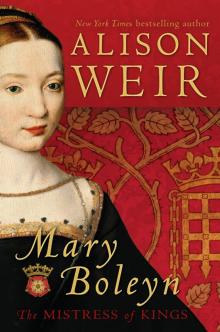 Mary Boleyn
Mary Boleyn Britain's Royal Families
Britain's Royal Families The Tower Is Full of Ghosts Today
The Tower Is Full of Ghosts Today Life of Elizabeth I
Life of Elizabeth I Anne Boleyn A King's Obssession
Anne Boleyn A King's Obssession Lancaster and York
Lancaster and York Jane Seymour, the Haunted Queen
Jane Seymour, the Haunted Queen Queen Isabella
Queen Isabella The princes in the tower
The princes in the tower